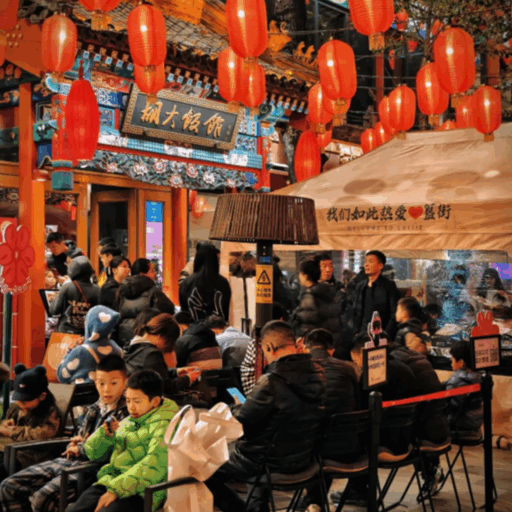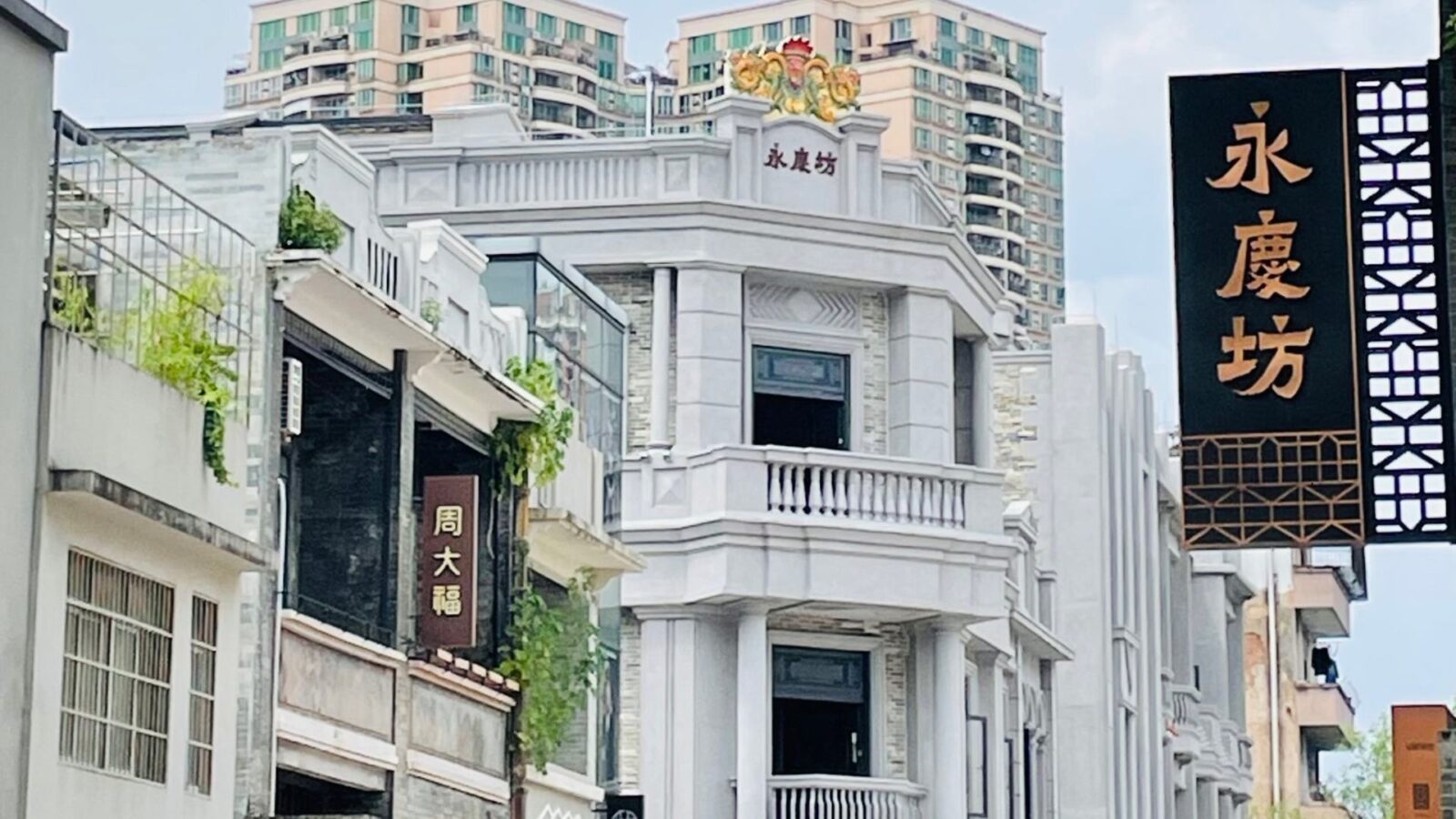Charming and magnificent, Shanghai masterfully integrates history, culture, and modernity. It showcases the age-old streets in the French Concession, the modern skyline of Lujiazui, and offers a range of incredible culinary options. This city is impossible to forget when visited. The 3-day schedule provided is designed to offer you the best of this bustling metropolis. Get ready to explore both the well-known and lesser-known places in Shanghai and experience unforgettable moments at every turn. Get ready to be utterly captivated by this city.
If you'd like to get a wider sense of what’s out there beyond this 3-day route, this broader guide to Shanghai's top things to do covers everything from must-see sights to places even some locals miss.
What to Include in Your Shanghai Itinerary?
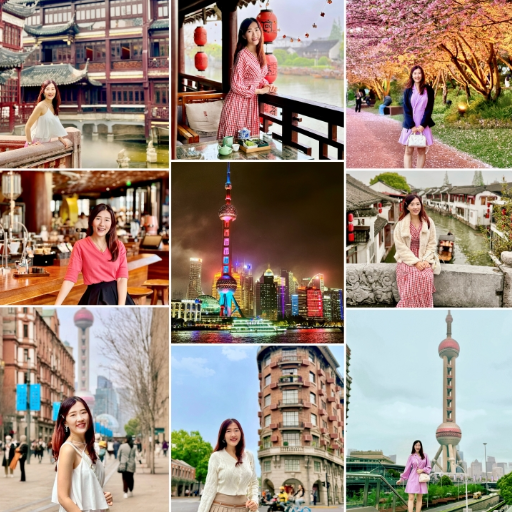
Best Things to Do in Shanghai
The Bund (Waitan): The Bund is one of the most photographed areas of the city. Along the Huangpu River, one can marvel at the city's skyline while the colonial history of Shanghai is laid right before you. From the retro buildings on one side to the futuristic Lujiazui towers on the other, there is beauty in every angle. The water reflects charming views of the city at night, making it even more spectacular.
Shanghai Tower is an architectural masterpiece, directly accessible from the subway. It is the world’s tallest building, making it a place with stunning views of Shanghai. If you want to experience breathtaking scenes, visit the viewing dock. The design of Shanghai Tower is a modern engineering marvel, something not to be missed by architectural fans, and its eco-friendliness only adds to its appeal.
YU Garden: YU Garden combines ancient architectural charm with stunning whirling pagodas, serene rockeries filled with koi fish, and intricate pavilions. This calm delight within the congested city streets, the harmonious medieval Chinese garden, allows one to escape into a tranquil world.
Nanjing Road: Nanjing Road grabs the attention of tourists around the globe. From global brands to local shops, the road is lined with countless luxuries. It is a perfect place to grab something for yourself or just blend into the exciting scenery.
Jade Buddha Temple: With its stunning statues of jade Buddhas and offerings, this temple seamlessly merges spirituality with architecture. It offers an escape where one can enjoy traditional Chinese Buddhist culture at its finest.
Tianzifang is a cluster of narrow streets packed with art studios, souvenir shops, and restaurants, located in the French Concession region. This spot is unique because it fuses both old and new, making it perfect for shopping and cultural immersion.
Shanghai Museum: The Shanghai Museum is a heaven for history and art enthusiasts, as it contains a massive assortment of ancient Chinese relics, including calligraphy and intricate jade carvings. The uniquely modern architecture of the museum is, itself, a boundary marker of the city.
These sites provide a fantastic overview of Shanghai's ancient and contemporary wonders, ensuring a balanced and rich travel experience.
Best Time to Visit Shanghai for Your Itinerary
The time of year one plans to visit Shanghai somewhat depends on the prevailing weather conditions and the activities desired. In general, spring (March to May) and autumn (September to November) are considered the best times to visit the city. During these months, temperatures range from mild to warm, between 50°F and 72°F (10°C and 22°C), making outdoor sightseeing and walking tours pleasant.
The warmth of spring, accompanied by its blossoming flowers and vibrant flora, makes a trip to serene places like Yuyuan Garden or walking along the Bund a fantastic experience. At the same time, autumn features clear blue skies and crisp air, making it ideal for cultural festivities and visiting famous parts of the city, like the French Concession.
In Shanghai, summer lasts from June until August. With the Summer International Film Festival, it becomes a busy season full of activities. However, these months can be very steaming and sticky, with an average temperature of 30°C (86°F) or higher. On the other hand, December to February aligns with winter and is marked by cold weather, with temperatures sometimes dropping below freezing. Despite the cold, this season has cheerful vibes, which, along with lower tourist crowds, makes it enjoyable. Having this knowledge in mind enables travelers to customize and schedule their plans according to Shanghai's unique charm.
A Short Guide on How to Spend a Day in Shanghai
If you plan to spend a day in Shanghai, consider getting up early so you don’t miss the city's vibrant energy. The first place to visit is The Bund, where you can watch the sun rise over the Huangpu River while you savor the mix of colonial buildings and the modern skyscrapers dominating the skyline. For breakfast, local street vendors or cafes offer xiaolongbao (soup dumplings) or jianbing (crêpes), which are made fresh.
A moderate level of activity matches best during the late morning. You can start by exploring the Yu Garden, a traditional Chinese garden from the Ming Dynasty. Another place worth visiting is the Shanghai Museum, renowned for its collection of ancient art and relics. For lunch, you can opt to go to one of the famed Shanghainese restaurants where you can taste authentic dishes like hong shao rou (braised pork belly) or drunken chicken.
Afternoon in Shanghai offers excellent opportunities to experience the city’s contemporary aspects. Check out the throngs of people at one of the world's most frequented shopping centers, Nanjing Road, or visit the M50 Creative Park for its vibrant artistic community. If you have a preference for beautiful views, take a moment to stand at the observation deck of Shanghai Tower, which offers an incredible view of the city skyline.
Wrap up your day with an unforgettable evening. Indulge yourself in elaborate acrobatic performances at the renowned Shanghai Circus World or relax on a cruise along the Huangpu River and appreciate the illuminated city. For dinner, feast on a blend of modern and traditional favorites or international dishes at the many rooftop restaurants, which offer breathtaking views of the skyline.
Day 1: Exploring the Heart of Shanghai
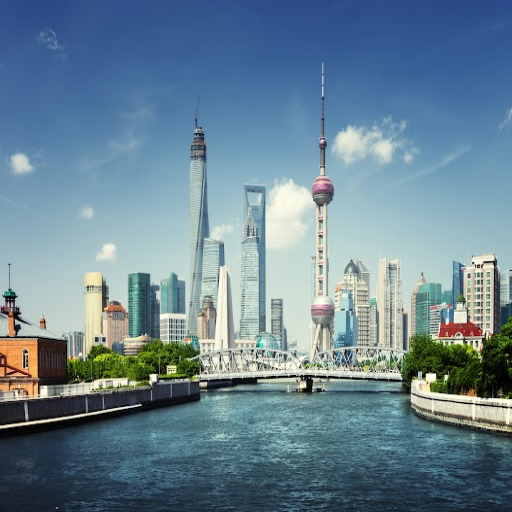
Important Places to See on Day 1
Begin your Shanghai expedition at the Bund, one of the city's resplendent waterfronts, which showcases its historical buildings and modern towers. The landmark promenade lets you walk along the Huangpu River, where you can see the Customs House building and the magnificent skyline of Shanghai Pudong. This place also serves as an incredible photo shooting location.
The next spot on the list to see is Yuyuan Garden, a classical Japanese garden which dates back to the Ming Dynasty. This beautiful garden allows you to zen out with its colorful pavilions, koi fish ponds, and rockeries. You can find an essential fragment of Shanghai’s culture here. Near the garden is the Yuyuan Bazaar, a lively market filled with shopping options, including handicrafts, souvenirs, and street food.
Now, let's take a break from history and visit the Oriental Pearl Tower located in Pudong. The architecture of this tower is jaw-dropping and stands at a height of 1,500 feet. From the observatory decks, you can get unparalleled views of the city. Visitors looking for an adventure will love stepping on the glass floors on the skywalk. There is also a unique 360-degree dining experience at the revolving restaurant.
Nanjing Road, one of the busiest shopping streets, is the perfect destination for ending the day. Walking for over three miles, shoppers can enjoy high-end shopping at boutiques or visit department stores, as well as find smaller, local shops. It offers captivating street performances, and simply being present fills one with energy from Shanghai's vivacious culture.
Taking in The Bund and Nanjing Road
With lovely waterfront views, The Bund is home to several architectural marvels that symbolize Shanghai’s historical transformation over the years. Some hotels, like the Neoclassical Peace Hotel and the ornate Customs House, are symbols of the city’s rich cultural heritage, along with numerous other landmarks. Tourists can walk along the promenade to appreciate the stunning views that the modern Lujiazui skyline has to offer, especially at night when the sparkling lights reflect off the Huangpu River.
Tradition and modernity are perfectly blended at Nanjing Road. With street performances, local foods, and so much more, the immersive experience does not stop at the cultural spectacle of the vibrant atmosphere. The eastern section of the road is home to luxury brands, while the Western side features traditional fabric stores that showcase China's crafts. Every day, approximately 1 million tourists walk through Nanjing Road, making it not only a shopping destination but also a cultural spectacle.
Places to Eat Around the French Concession
Not only does The French Concession boast some of the most beautiful historical architecture in Shanghai, but it also has tree-lined roads. It also has a diverse selection of places to dine at. One option, Jesse, specializes in Shaghainese cuisines, from drunken chicken to red-braised pork. For those who enjoy quick meals, modern takes on Chinese food can be enjoyed at chic fusion diners scattered throughout the area.
For Europeans, French Bistros have some of the best duck confit and escargot you can find, artfully presented on the plate. Traditional pizza and pasta lovers can visit the Italian Trattorias. Everyone can enjoy the freshest sushi and ramen at the Japanese stalls and come for the best that the East has to offer. For a more relaxed setting, bakeries and cafes serve artisan pastries and excellent coffee.
All of these places take pride in offering diners the French Concession blend of modern trends and historical elegance, with unique atmospheres that change the dining experience. From quick bites to multi-course meals, there is something for everyone.
Day 2: Delving into Shanghai’s Culture
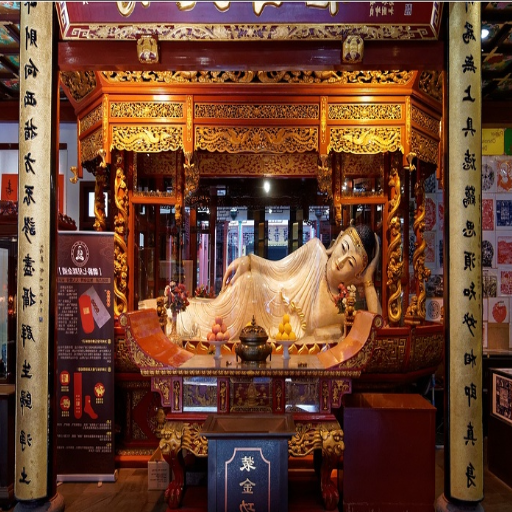
Going to the Jade Buddha Temple and the Shanghai Museum
Built in 1882, the Jade Buddha Temple is one of Shanghai’s most renowned Buddhist sites, featuring tranquil oases filled with spirituality. A significant part of the temple is two breathtaking jeweled Buddha statues from Myanmar. The statues were carved from a single block of white jade and feature unparalleled craftsmanship. Visitors can relish in the calm beauty of the seated Buddha and reclining Buddha, which represent an enlightened state of mind and a fundamental level of peaceful rest, respectively. The intricate carvings of golden details on the temple, along with its golden signs, provide an awe-inspiring glimpse into Chinese religious traditions.
Soaking in the harmonious atmosphere of the temple, one can visit the Shanghai Museum, which offers an entirely different cultural perspective. The museum is renowned for housing one of the largest collections of Ancient Chinese art and historical artifacts, including 120,000 pieces of ancient Chinese bronzes, ceramics, paintings, and ancient Chinese calligraphy, among others. Its square-shaped base represents earth, while its round-shaped design represents heaven, a nod to Chinese cosmology. The Museum has thoughtfully designed galleries showcasing the artistic and historic development of the nation. These two visit spots provide an excellent overview of Shanghai's history and culture.
Visiting Tianzifang and Yuyuan Bazaar
Both Tianzifang and Yuyuan Bazaar are among the most captivating places in Shanghai because they combine history, culture, and dynamic life. As a part of the former French Concession, Tianzifang is a Shikumen architectural wonder that describes a maze of narrow alleys. It is famous for its exquisite Shikumen architecture and vibrant art scene. Craft shops, modern art galleries, and charming cafes housed in the Shikumen architecture add to the buzz of this area. Located in the bustling neighborhood, these places serve as aids to the specialties that define the area.
Compared to the former, the Yuyuan Bazaar, near the historic Yuyuan Garden, features a traditional Chinese market that transports you to another world. The bazaar is a lively hub overflowing with stalls selling a mix of souvenirs, local delicacies, and exquisite handicrafts. Pleasing locals and tourists, soup dumplings (xiao long bao) are among the iconic foods not to be missed. Both of these sites serve as the center of creativity in Shanghai, remaining intertwined with its history.
Evening Views of the Shanghai Skyline
Shanghai’s skyline is, hands down, one of the most incredible sights in the world and a key metropolitan hub in China. The illuminated Bund overflows with gorgeous sights from the waterfront, showcasing all buildings and historical sites glowing in March gold color. The Bund offers views of Shanghai's skyline, with the iconic Bund and Lujiazui financial district. Lujiazui district features some of the world’s most renowned towers and skyscrapers. Shanghai Tower, which is China’s tallest building, dazzles with rhythmic lights and shines spirally on its pillar-styled façade. The Pearl Tower is a pretty noteworthy centerpiece of the skyline and offers striking views.
If watching the city from the top is your scene, heading to any of the observation decks located on the Jin Mao Tower or Shanghai World Financial Center is the place to be for magnificent views. The combination of ultramodern architecture and the stunning illumination exemplifies the country's and city's ambition as a global leader and revolutionary. Everything combined earns Shanghai fashion a place as one of the most remarkable cities around the globe.
Day 3: Modern Shanghai Adventures
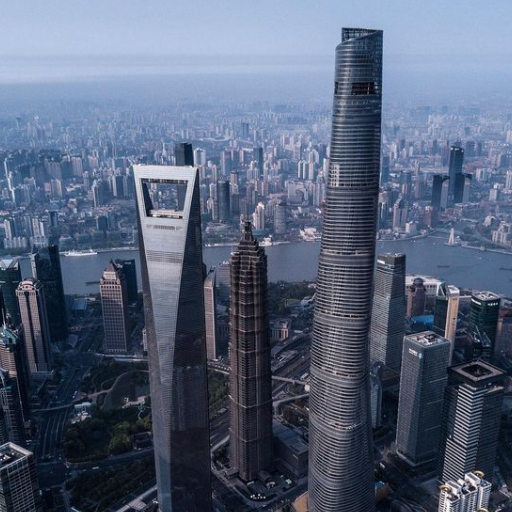
Conferring Views on Shanghai Tower
The Shanghai Tower holds the title of being the tallest building in China, and it ranks second in the world. Not even the Tower is said to surpass a height of 632 meters (2,073 feet), Once you reach the 118th floor obsrevaion deck you will interpreted with unrivaled sceneries of the iconic Shanghai Tower. Only at the 118th floor deck of the Shanghai observation deck will you be able to have a clear view of the Huangpu River. The oriental pearl tower and Jin Mao Tower are also some of the towers one can look forward to from the deck. The sleek forms that Shanghai Tower boasts are said to be the result of the powerful winds inflicted on it.
The high-speed elevator in Shanghai Tower is one of the fastest in the world, with a record-breaking speed of 20.5 meters per second. For a truly immersive experience, guests are propelled to the top in Shanghai Tower's record-breaking elevator. Visitors are treated to astonishing views from the observation deck, which change throughout the day. The cityscape is a mix of contemporary skyscrapers and historic districts. During the evening, the city comes alive and transforms into a stunning tapestry of color against the night sky, thus living up to its title "City of Light." Whether you're a photography enthusiast or looking to capture a skyline view of the dynamic metropolis, the Shanghai Tower offers an experience remarkable enough to define modern Shanghai.
A Day Trip to Suzhou: Is It Worth It?
Suzhou, known as the "Venice of the East," is a city well-known for its history and beautiful scenery. With its location just 30 minutes away from Shanghai by high-speed rail, it surely offers an educational and recreational experience for someone who wants to explore more in a day. It is possible to experience it within a few hours by using China's rail system. But do not forget that. Suzhou is also famous for its classical gardens, which are UNESCO World Heritage sites. These sites include the Lingering Garden and the Humble Administrator’s Garden. These gardens are wonders of architectural ingenuity, showcasing China's rich history through their beautifully crafted landscapes, ponds, and pavilions.
Though famed for its exquisite gardens, Suzhou is also known for its canals that hint at its historical significance as a trade center during the Ming and Qing Dynasties. Tourists can enjoy a soothing boat ride along the canals, where they are treated to views of whitewashed buildings, ancient stone bridges, and lantern-studded streets. Moreover, Suzhou is home to several silk museums and traditional weaving centers, which showcase the region’s rich silk-making heritage and offer a deeper understanding of the craft that has been practiced for centuries.
Suzhou is perfect for an escape from fast-paced urban life as it strikes a delicate balance between cultural heritage, natural beauty, and unforgettable experiences. This astonishing city can be included in whatever plan you have, whether it's about peace or a historical deep dive.
Unwinding at the Huangpu River
The Heart of Shanghai is a colorful city during seasonal changes, with a delightful combination of crown jewels, textures, and ecosystems along its exquisite Huangpu River. Huangpu River is located at the heart of Shanghai, flourishing richly from north to south for more than 70 miles, separating Shanghai into two destinations: Puxi, which has historical significance dating back thousands of years, and on the other hand, Pudong, which has towering skyscrapers, giving us a modern and updated approach to the world.
While sitting on the shore, waterfront walkways provide smooth strolling routes along with well-maintained landscaped parks where both residents and tourists can relax and unwind. Furthermore, visitors can treat themselves to a splendid river cruise to soak in the combination of historical landmarks and modern skyscrapers visible on the riverbanks. During the day, cruise riders can appreciate landmarks like the Bund, along with the proudly glowing Oriental Pearl Tower, while at dusk, trips offer a mind-blowing view of the city gleaming on the water.
Moreover, the Huangpu River, being a masterpiece in itself, also represents the city's traditional values and its up-to-date dynamism.
Additional Tips for Your 3-Day Shanghai Itinerary
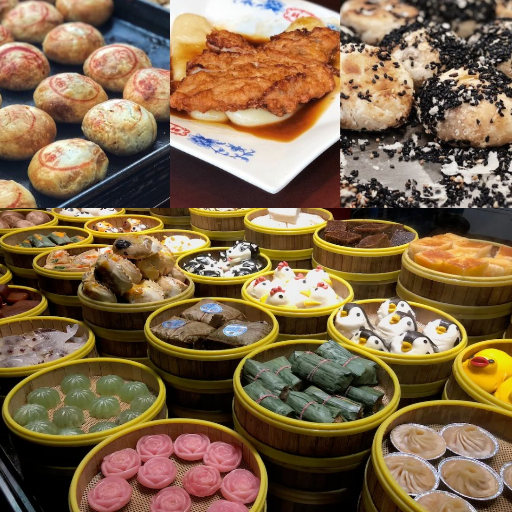
Local Cuisine and Street Food to Try
Trying local cuisine and indulging in the street food in Shanghai is an unforgettable experience. I would especially recommend beginning with soup dumplings or xiaolongbao, which are synonymous with Shanghai. These delicate parcels of pork are complemented with piping hot broth. It's a beautiful delight that bursts in your mouth. Whether in posh restaurants or busy street stalls, soup dumplings are a must-have that reflects the city’s culinary tradition.
One of my favorites is jianbing, which is often described as China’s breakfast crepe. Street vendors serve these delicious snacks with eggs, scallions, cilantro, and a crispy cracker rolled up inside. Then they are brushed with a combination of sweet and salty sauces. They are perfect for those who want a quick and tasty meal while sightseeing in Shanghai.
While in Shanghai, the street markets are a must-visit. In the markets, don’t forget to grab some shengjianbao, a type of pan-fried soup dumpling with a delightfully crunchy bottom and juicy filling. If you have a sweet tooth, tanghulu will be perfect for you. They are pieces of fruit on a skewer and covered in a sweet and tangy glaze. In Shanghai, street food is the perfect combination of the city's fast-paced energy and traditional flavors, which is a vital aspect of experiencing the culture.
Best Times to Visit Attractions in Shanghai
The best times to visit attractions in Shanghai are spring (March to May) and autumn (September to November). This is because the weather around these months is comfortable and pleasant, which is ideal for both indoor and outdoor exploration. Spring makes places like Yuyuan Garden and Century Park excellent for relaxation due to their blooming flowers and greenery. Autumn cools the temperature, and with clear skies, it’s easy to enjoy landmarks like the Bund or take a ride on the observation deck of the Shanghai Tower.
To avoid large crowds, it's best to visit on weekdays or during public holidays. During weekends and special festivals, Shanghai tends to be packed with travelers. Early mornings and late afternoons are also great times to visit famous places like the historic temples or Nanjing Road, as they tend to be less crowded during these times.
To make the most of what Shanghai’s summer has to offer, I suggest avoiding July and August, as the weather in the peak summer months can become hot and humid, making it less bearable for tourists. Exploring the city in winter is an alternative option as sightseeing in less busy months translates to a more peaceful experience, although it can still be damp and cold. The decorations around December and Chinese New Year are stunning, adding a unique charm to the streets. With a bit of flexumming, planning a trip during the end of winter and beginning of winter allows tourists to enjoy Shanghai in a laid-back manner.ђ
Getting the most out of Shanghai in 3 days
The first day in Shanghai I suggest exploring the iconic landmarks like the Bund waterfront area where you can not only appreciate ancient colonial-era architecture, but also feast your eyes on among the towering skyscrapers of Pudong. A visit to Yu Garden is a must, located in the Old City of Yu, where sophisticated Chinese gardens blend beautifully with traditional design. You can end the day with shopping at Nanjing Road, and for those who love cityscapes, make sure to catch the sunset from the top of the Oriental Pearl Tower or Shanghai Tower.
While in Shanghai, you can spend your second day exploring its culture and history. The Shanghai Museum should be your first stop, mainly because of its collection consisting of ancient Chinese artistry. After the museum, head to the French Concession, a delightful area with tree-lined streets, Art Deco villas, and cafes. Tianzifang is also a popular destination where you can find local crafts and modern art. To wrap things up, have dinner at a local Shanghainese restaurant, and if you're up for it, try a taste of soup dumplings, a local favorite.
On your last day, take a break from all the hustle and bustle in the city center and experience a different, quieter part of Shanghai. A day trip to Jhujiajiao would be perfect as it is a water town that is also known as “the Venice of Shanghai.” It has ancient canals, stone bridges, and tea houses. To get away from the crowds, slowly walk around Century Park or check out the modern art shows at the Power Station of Art. Finish your trip with an evening cruise on the Huangpu River, where you can enjoy the stunning skyline of the city at night.
Frequently Asked Questions (FAQs)
Q: What is my ideal 3-day itinerary for Shanghai?
A: Try Yu Garden, Shanghai History Museum, Oriental Pearl Tower, and even Shanghai Disneyland theme park for a day tour. Don't forget to stroll through the busy streets of old Shanghai and enjoy the breathtaking views from the tallest tower in China. A balance of culture, history, and modern sites will make Shanghai its fullest in 3 days.
Q: Is spending 2 days in Shanghai enough to experience the main attractions?
A: Yes, Pudong District, The Bund, and Yu Garden are essential sites to visit in two days, considering part of the day is dedicated to private transportation. Booking a private tour allows for complete customization of the tour, alongside optimized scheduling.
Q: Activities on day 4 need to be incorporated. How do I organize my trip to Shanghai?
A: Optimizing other days so that nearby attractions can be squeezed in while incorporating day tours, which could enrich the experience, should be planned when thinking of day 4 in mind
Q: What are some places to stay that will be as hospitable as Shanghai?
A: In Shanghai areas, such as the French Concession, there are boutique options, while Pudong offers luxurious hotels. Make sure to check hotels that suit your budget, as there are diverse options in Shanghai to match your preferences.
Q: How would one travel from Shanghai Pudong International Airport to the city the best?
A: Using the maglev train is the best option for traveling, as it connects quickly and doesn't waste time. If traveling on a slow schedule, a taxi or shuttle bus might be a better alternative.
Q: What would a tour of Shanghai, which includes the Urban Planning Exhibition Center, be like?
A: With a tour of Shanghai that consists of a visit to the exhibition center, you gain knowledge about the history and development of the city. It is wonderful to see the informative and astonishing models and exhibits that showcase Shanghai's transformation.
Q: How many days do I need to explore Shanghai fully?
A six-day itinerary is ideal, as it allows you to explore Shanghai city and its surroundings fully. Major attractions can be visited, and local delicacies can be savored. You also enjoy both old and new Shanghai at a leisurely pace.
Q: What are some unique places to visit in Old Shanghai?
A: For instance, Wukang Road is also famous for its quaint cafes and architectural beauty. Thus, the modern vintage shops on the block are surrounded by a myriad of culturally significant historic structures, adding to the charm, making it a walkable stretch.
Q: What should I expect at Shanghai Disneyland?
A: With a bonus of culturally relevant elements, expect classic Disney rides and attractions exclusive to China at Shanghai Disneyland. Focusing on spectacular shows to be experienced beyond Shanghai Disney Resort, its a family favorite and a must-visit.

